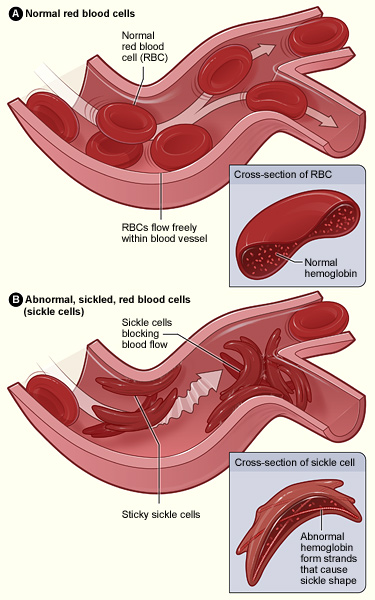

Research has shown that many patients with SCD experience stigma related to seeking care for pain and may encounter institutional racism, which can result in patients switching providers. This increase, the authors said, could be explained by patients having challenges identifying or connecting with SCD specialists as well as with providers who understand their needs. These costs, the study found, peak between ages 13-24, a period when many people with SCD transition from pediatric to adult care and may have increased medical visits. They also had higher out-of-pocket medical costs, which averaged about $1,300 each year. The researchers found that people living with SCD had more medical appointments, more urgent care and emergency medical visits, and more prescriptions, compared to people without the disease. The average life expectancy in this review for people without SCD was age 62 for women and age 60 for men. (The average life expectancy for Americans is 77, according to the Centers for Disease Control and Prevention.) The average age of patients with SCD in this review was 25, and the average life expectancy was age 51 for women and age 50 for men. The researchers then adjusted for average life expectancy. To calculate the lifetime out-of-pocket medical costs for men and women living with sickle cell disease, researchers analyzed commercial health insurance claims filed between 2007-2018 by 20,891 people younger than age 65 living with SCD and compared those claims to those filed by 33,588 people of the same age and sex who did not have SCD. “We hope this analysis complements the larger scientific quest to identify cures for sickle cell disease.” “Identifying ways to reduce the burden many people living with SCD face is a critical part of coordinated research,” said Kate Johnson, Ph.D., a study author who completed the research while working at The Comparative Health Outcomes, Policy, Economics Institute at the University of Washington, Seattle. The healthcare spending analysis, which published today in Blood Advances, underscored the significant financial toll that sickle cell disease, an inherited blood condition, has on patients, their families, and the healthcare system.


And insurers pay $1.7 million on average for each person living with SCD, according to new research supported by the National Institutes of Health. Potential curative therapies may help reduce the burden, but are also costlyĪmericans ages 64 and younger with commercial health insurance who live with sickle cell disease (SCD) pay almost four times more in out-of-pocket medical costs over their lifetimes, a total of $44,000, compared to people living without the disease.


 0 kommentar(er)
0 kommentar(er)
